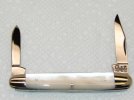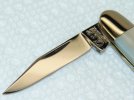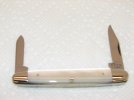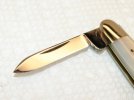Hi all,
I'm pretty brand new to traditional knives, but am in love with this particular Case model. The only issue is that I have very little knowledge on how to spot fakes, or a bad deal in general.
I was hoping you guys could help me out with this. This is the knife.




The info on the knife is that it is from 1920-1940, and has been professionally cleaned. I don't want a rework, and I'm sure you guys frown upon the cleaning.
Thanks for any advice and help,
Kyle
I'm pretty brand new to traditional knives, but am in love with this particular Case model. The only issue is that I have very little knowledge on how to spot fakes, or a bad deal in general.
I was hoping you guys could help me out with this. This is the knife.




The info on the knife is that it is from 1920-1940, and has been professionally cleaned. I don't want a rework, and I'm sure you guys frown upon the cleaning.
Thanks for any advice and help,
Kyle
